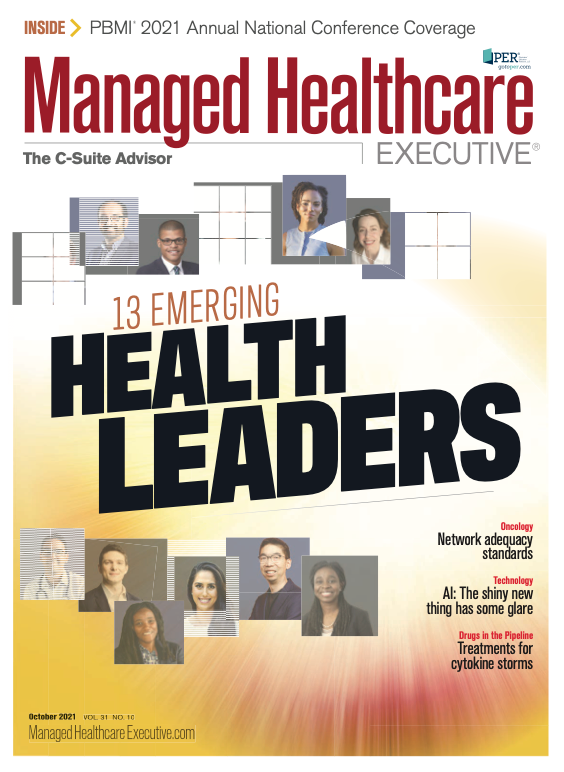Oncology: Network Adequacy Rules for Cancer Care are Often Inadequate
Many states only have vaguely worded qualitative standards for network adequacy for cancer care. Others have quantitative standards based on distance or waiting time.
The ACA set national network adequacy standards, but since 2018 the responsibility has devolved to each state. The result is a patchwork of standards, many of them vague, according to a report published in JNCI Cancer Spectrum earlier this year.
Catherine Moore, M.D., at George Washington University School of Medicine in Washington, D.C., and David I. Shalowitz, M.D, M.S.H.P., of the Wake Forest School of Medicine, contacted representatives of the insurance departments in every state and Washington, D.C., and combed through information on state websites to gather network adequacy standards for cancer care.
They found that 16 states used only qualitative standards for access to an oncologist, such as health plan members must have “reasonable access” to oncologists or care. Seven states had quantitative elements, such as travel distance or a ratio of providers to members. Twenty-four states had network adequacy standards with both qualitative and quantitative elements.
“We found that states’ standards currently are highly variable,” Shalowitz says. “Unclear network adequacy standards for insurance plans may put patients at risk for poor access to cancer care.”
According to Shalowitz, it’s important for states to ensure that robust, transparent protections exist so that patients can access high-quality cancer care without having to go to a provider that is out of network, which may result in large medical bills that many people couldn’t afford to pay.
“While a single network adequacy standard may be neither possible nor desirable for all states and insurance markets, states should collaborate with patient advocates and cancer professionals who have knowledge of local markets and patients’ needs to develop basic standards for insurance coverage,” he says. “Transparent standards will also permit study of cancer care delivery outcomes related to network adequacy, improvement in access to high-quality care and minimization of the sometimes disastrous financial consequences of out-of-network billing.”
Shalowitz would also like to see additional research conducted to determine how network adequacy standards can be applied to rare or complex cancers and how they might improve equity in access
to care.
Results of a number of studies have shown that nearly 1 in 5 emergency department visits involve a patient unknowingly being treated by an out-of-network provider, which led to unanticipated medical bills. The American Society of Clinical Oncology (ASCO) has pushed for legislation to address surprise billing for cancer patients. A spokesperson for ASCO confirmed that the organization is still pushing CMS to enact network adequacy standards for Medicaid managed care enrollees so they can access high-quality cancer care and all the oncology specialties in a timely fashion.
“Although our study did not address the issue of surprise billing specifically, we are concerned that patients may be at higher risk for receiving catastrophic medical bills if their insurance plan does not provide adequate access to cancer care,” Shalowitz says.
Network adequacy can be a major issue for patients with rare cancers. In a previous study, Shalowitz found that 27% of plans sold on insurance exchanges didn’t have an in-network specialist in gynecologic cancers, despite evidence that treatment by a specialist improves survival for patients with those types of cancers.
“Policy makers must ensure that insurance plans uniformly offer adequate coverage for cancer care to ensure that patients with these diseases are able to access high-quality treatment,” Shalowitz says.
Keith Loria is a freelance writer in the Washington, D.C., area.Many states only have vaguely worded qualitative standards for network adequacy for cancer care. Others have quantitative standards based on distance or waiting time.

Using the 'Pathway' Approach to Shorten the Time Between Cancer Diagnosis and Treatment
November 16th 2022In this episode of Tuning In to the C-Suite, Briana Contreras, editor with Managed Healthcare Executive spoke with Dr. Yuri Fesko, oncologist and vice president of Medical Affairs at Quest Diagnostics. In the conversation, Dr. Fesko addressed the ongoing issue of long gaps of times between receiving a diagnosis for a type of cancer and finally getting the treatment for it. Dr. Fesko shared the benefits a number of sectors receive when treating patients sooner and the steps to get there.
Listen
FDA Approves First BTK Inhibitor as First-Line Therapy for Mantle Cell Lymphoma
January 27th 2025The drug received accelerated approval in October 2017 as monotherapy for adults with MCL who have received at least one prior treatment. The FDA simultaneously converted the conditional approval to full approval for this indication.
Read More